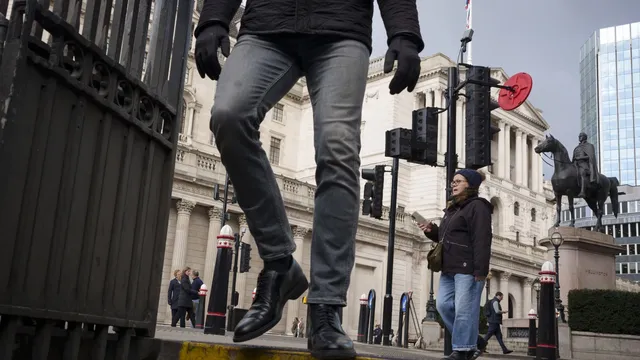
Global central banks cut rates as Fed hesitates amid uncertainty
2025-02-07 00:00- The Bank of England lowered its benchmark interest rate by 25 basis points to 4.5%, its first cut this year.
- The Reserve Bank of India also reduced its repo rate by 25 basis points, marking its first rate cut in nearly five years.
- Many economies are adapting to a lowering interest rate environment while the Federal Reserve may not follow suit due to political uncertainties.
Express your sentiment!
Insights
In the United Kingdom on February 6, 2025, the Bank of England announced a reduction in its benchmark interest rate by 25 basis points, lowering it to 4.5%. This decision marked the first rate cut of the year and came as part of a broader trend observed internationally, as central banks in various economies are adapting to a climate of slower growth and seeking to stimulate economic activity. The European Central Bank had similarly cut its rates by 25 basis points just days earlier, on January 30, highlighting a concerted effort across Europe to address economic challenges. Moreover, the Reserve Bank of India made its first rate cut in nearly five years, trimming its repo rate by 25 basis points to 6.25%. The Bank of England's decision was unanimous among members of the monetary policy committee, although two members voted for a more significant cut of 50 basis points, underscoring the urgency felt by policymakers. Alongside this monetary easing, the Bank also revised its economic growth forecast for the U.K. from 1.5% to 0.75% for the year 2025, reflecting growing concerns about the pace of recovery amid potential global economic headwinds. In the context of these interest rate reductions, many economies appear to be gravitating toward a lower-rate environment, influenced significantly by heightened demands for economic stimulation. The Federal Reserve in the United States, however, seems to be in a different position, facing uncertainties related to U.S. President Donald Trump's economic policies. Unlike the trend seen in these other economies, it is unclear whether the Fed will even implement the expected two rate cuts in 2025 that had been forecast back in December. Critically, the influence of Trump's administration on monetary policy has shifted; Treasury Secretary Scott Bessent indicated that the administration is now focused on fiscal policies rather than pressuring the Fed for immediate rate reductions, reflecting a broader strategy aimed at maintaining low Treasury yields. This divergence creates an intriguing dynamic in the global financial landscape as markets adjust to the differing paths of monetary policy among major central banks.
Contexts
Lower interest rates play a crucial role in influencing economic growth by affecting various aspects of the economy, including consumer spending, business investment, and overall economic activity. When central banks, such as the Federal Reserve in the United States, lower interest rates, it becomes cheaper for consumers to borrow money for purchases, such as homes, cars, and other goods. This increase in borrowing can stimulate consumer spending, which is a significant component of economic growth. As consumers spend more, businesses see an uptick in demand for their products and services, leading to potential expansions, hiring, and further investment, ultimately fueling economic growth. The mechanism through which interest rates impact consumer behavior is primarily through lower monthly mortgage or loan payments, thereby freeing up disposable income that can be directed toward consumption of other goods and services. Additionally, lower interest rates can greatly influence business investment decisions. Businesses typically depend on borrowing to finance capital expenditures, such as purchasing new equipment, expanding facilities, or investing in research and development. When interest rates decrease, businesses are more likely to take advantage of these lower borrowing costs. This increased access to financing can lead to significant investments in productivity and capacity increases, which, in turn, can contribute to higher economic growth. Moreover, a lower cost of capital encourages businesses to take on new projects that may have been previously deemed too risky or unprofitable under a higher interest rate environment. Moreover, a sustained period of low-interest rates can also lead to increased confidence in the overall economy. Lower rates can signal to consumers and investors that the central bank is committed to fostering economic growth and stability. This sense of confidence can further exacerbate the positive effects of reduced interest rates, as consumers are more likely to spend and businesses more inclined to invest when they believe the economy is on stable footing. However, this phenomenon is not without its risks, as prolonged low rates can lead to excessive risk-taking by investors, potential asset bubbles, and may contribute to inflationary pressures if economic activity exceeds the economy's productive capacity. In summary, lower interest rates are a powerful tool for stimulating economic growth. They encourage consumer spending and facilitate business investment, driving demand and increasing economic activity. However, the impact of these rates is influenced by various factors, including consumer confidence, the state of the economy, and the broader financial environment. Understanding the dynamics of how lower interest rates affect economic growth is essential for policymakers, businesses, and consumers alike as they navigate the complexities of the economic landscape.